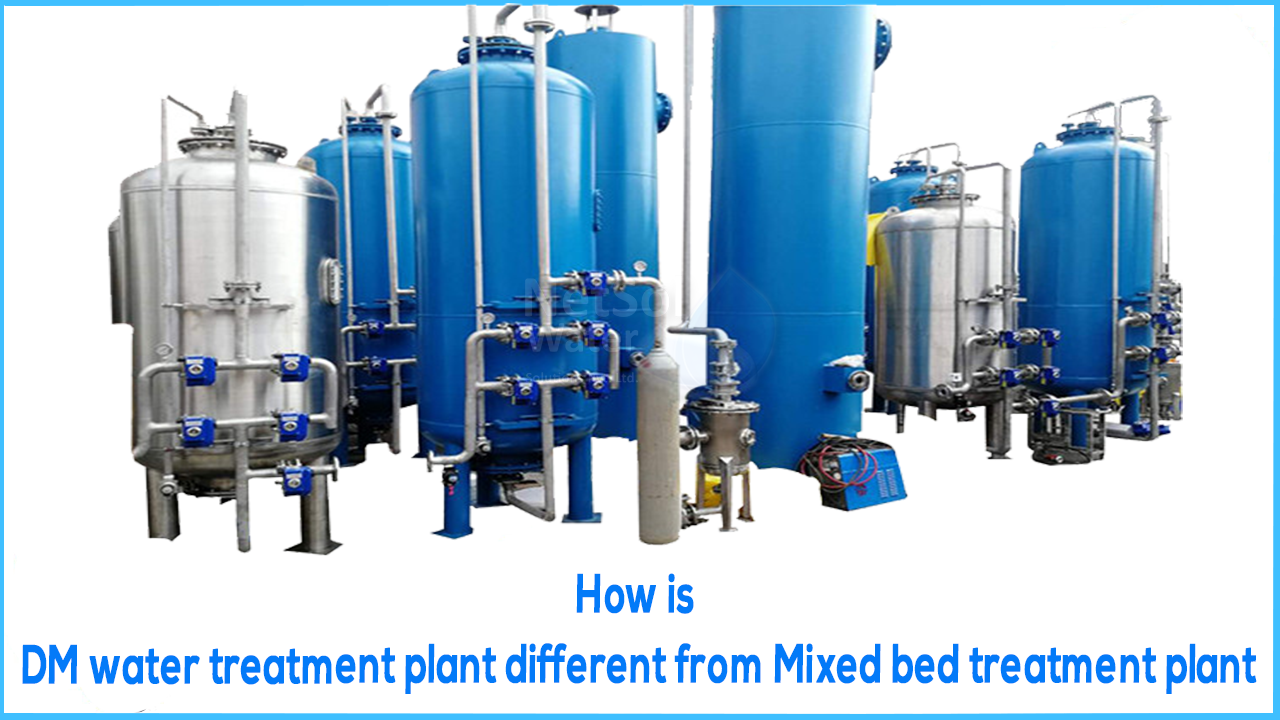How is dm water treatment plant different from mixed bed treatment plant
Water is a crucial aspect of modern manufacturing sectors, where it is often used as an ingredient, for sanitising, to decrease other strong liquids, as a shock absorber, etc. Water has been used in fiction and sensible ways in modern industries that were previously unpredicted. As the demand for goods and services expanded, the demand for usable water sources also expanded.
Netsol Water possesses all of the supplies required to generate high-quality water for all of the plant’s requirements, which include meeting multiple global purity standards. Netsol products and medical devices are made out of different grades of pure water.
What do you understand by the term Demineralized Water Treatment Plant?
Demineralised water is water that has been filtered to remove the vast majority of its mineral and salt particles, such as calcium, chloride, sulphate, magnesium, and sodium. Demineralised water is also widely recognized as demi water or deionised water. The most common way of eliminating certain minerals from feed water is known as demineralization. Water, in its original state, contains a variety of contaminants and minerals that make it unsuitable for use with equipment. This contaminated water is alluded to as hard water. Hard water is extremely troubling to the interiors of the machines and frameworks used in the pure water plant. It has the potential to severely erode metal parts and cause them to rust quickly.
As a result, removing minerals from hard water is a fundamental step in any purified water framework. All minerals that contribute to water hardness are removed, and only demineralized water is delivered. An Ion Exchange measure is used to eliminate the disintegrated minerals and salts. This cycle removes the pollutants that cause water hardness and softens it.
What do you understand by the term Mix Bed Water Treatment Plant?
Mix bed saps, additionally alluded to as blended bed particle trade gums, are essentially utilized in the water sanitization industry to clean handle water to accomplish demineralized water quality, for example, after an opposite assimilation framework. As the name infers, a Mix bed is comprised of solid corrosive cation and solid base anion.
The cation-trade and anion-trade saps are entirely blended and contained in a mono- tension vessel in Mixed-Bed deionizers, Cation tar is recovered with hydrochloric corrosive to deliver deionized water (HCl). Since hydrogen (H+) is emphatically charged, it ties to the contrarily charged cation sap dot.
A mix bed deionizer is comparable to a long series of two-bed plants because of the weakening of cation-exchangers and anion-exchangers in a solitary section. From now on, the water quality delivered by a blended bed deionizer is discernibly higher than that of a two-bed plant.
Difference Between demineralized water treatment plant and mix bed water treatment plant:
- 1. Water is demineralized by passing it through a cation resin column and then an anion resin column. Meanwhile, a Mixed-Bed Deionizer is equivalent to a long series of two-bed plants due to the dilution of cation- and anion-exchangers in a single column.
- 2. In Demineralized Water Treatment, three chemicals are used namely, cation exchange resin, ion exchange resin and mixed bed resin. On the other hand, Mixed Bed Resin is itself alluded with cation trade and anion trade.




